The Tour Of The Swedish Parliament | Riksdagen
 )
)
The Swedish Parliament House is located in the heart of Stockholm. Every time we pass by, I always take a picture of this magnificent building from outside. But last week we planned to go around the city by public transport and as we were passing by Parliament House we saw that today Parliament House is open to the general public. 28 people could go inside at a time so we decided to go inside too.
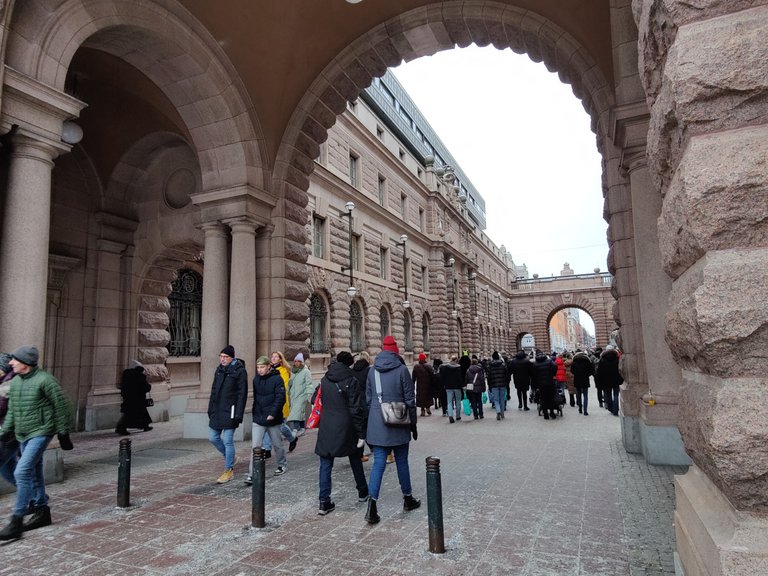
FREE ADMISSION
The Swedish Parliament is one of the most popular tourist attractions in Sweden, and for good reason! Not only is it a beautiful building, but it's also free to enter! That's right, you can explore all of the public areas of the parliament building without spending a single krona.
GUIDED TOUR
A guided tour of the Swedish parliament is a great way to learn about the country's political process and see the inner workings of government. The tour takes visitors through the main chamber of parliament, where laws are debated and passed, and also includes a stop at the historic Riksdag Gallery. Guides provide information on the parliament's history and how it operates today, making the tour both educational and interesting.
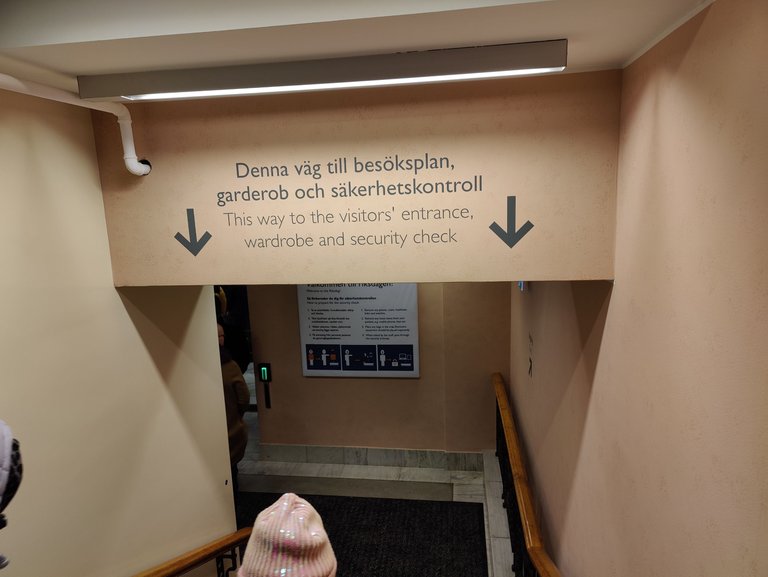
As you enter, after going down some stairs, there is a security check, which has a very airport-like feeling. After the security check, you keep your belongings in the locker room.
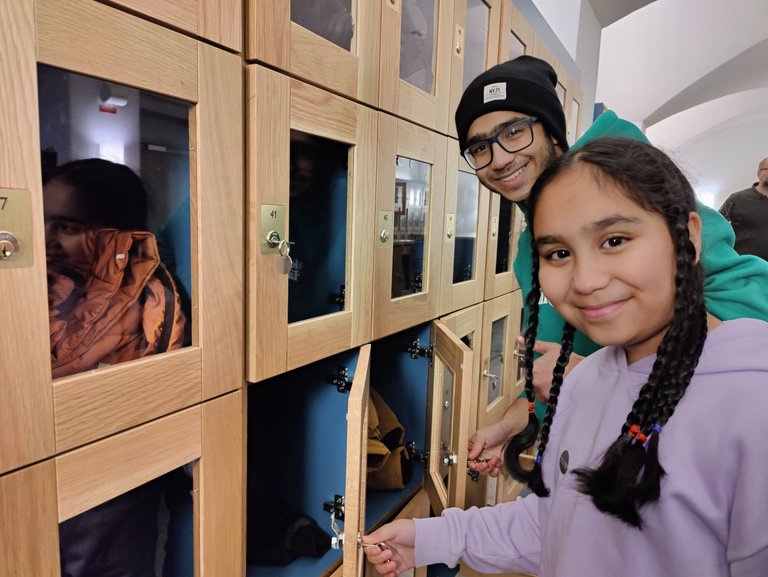
Cameras and mobile phones can be carried and taking photos is not prohibited. Knowing this, I was overjoyed and took pictures of every corner. The tour started with a visit to the bank hall.
The Bank Hall

The Bank Hall is one of the most iconic features of the Parliament building.
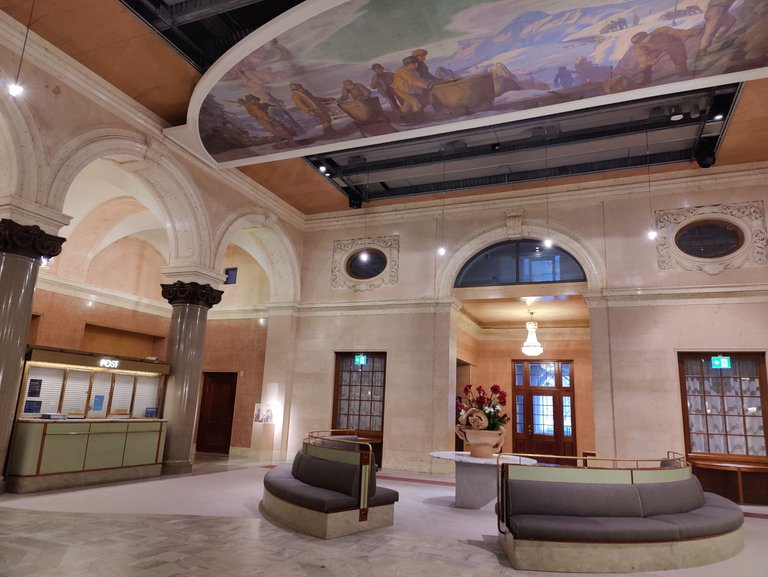
It was originally built as the Bank of Sweden, but now serves as a central meeting place for parliamentarians and visitors.

Restaurants, a post office, and an information desk can all be found here. The name reminds us of the time when this building belonged to the Bank of Sweden.
Fifth Floor
From the fifth floor of Parliament House, you can see the main buildings surrounding Parliament, including the Prime Minister's House. The Prime Minister of Sweden usually lives in the brown-roofed building called Sagerska Huset.
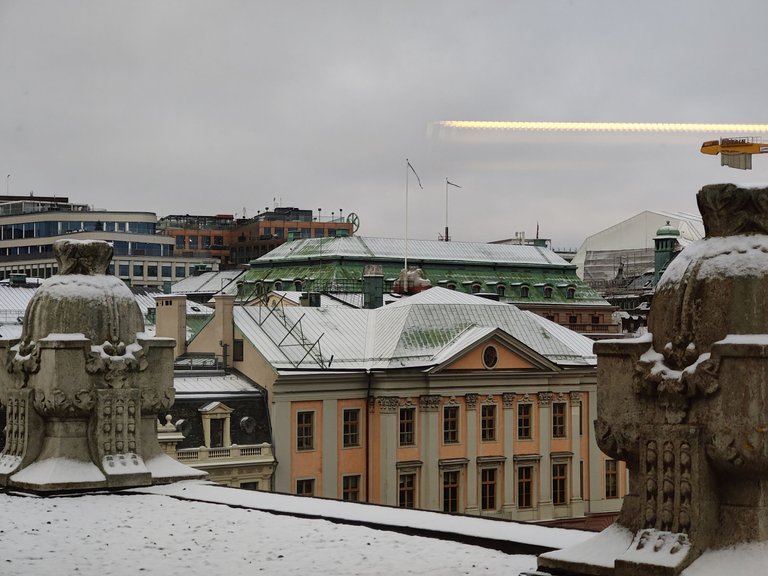
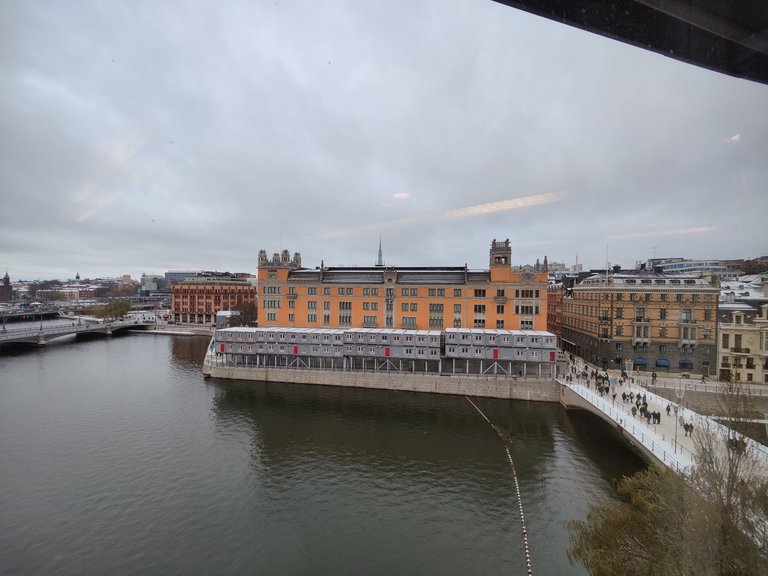
The orange building is where the political parties have their offices. The building with the green roof is the Foreign Affairs House, where all questions about foreign policy are discussed and decisions about foreign policy are made.
The Chamber
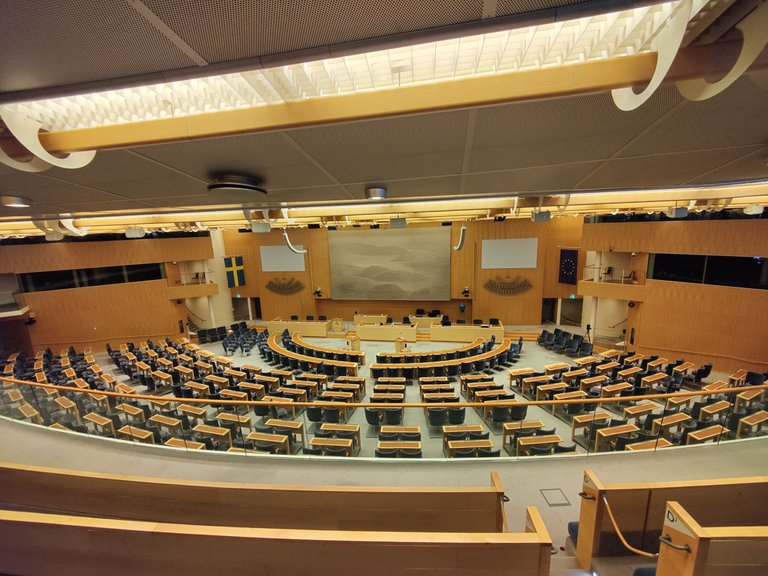
We went to the chamber of parliament and it was very interesting. The Chamber of Parliament is the beating heart of the legislature. It's where elected officials deliberate and make decisions. Regardless of their political affiliation, members of parliament are seated according to their constituency. The birch panelling is illuminated by the light coming in via the large windows below the ceiling. It was very interesting to see how they operate and to learn more about our government.
The Chamber Foyer
As we entered the chamber foyer, we saw four portraits on the wall. These portraits represented the four types of residents in the four-state parliament before 1866: the lowest peasants, burghers, priests, and the elite.
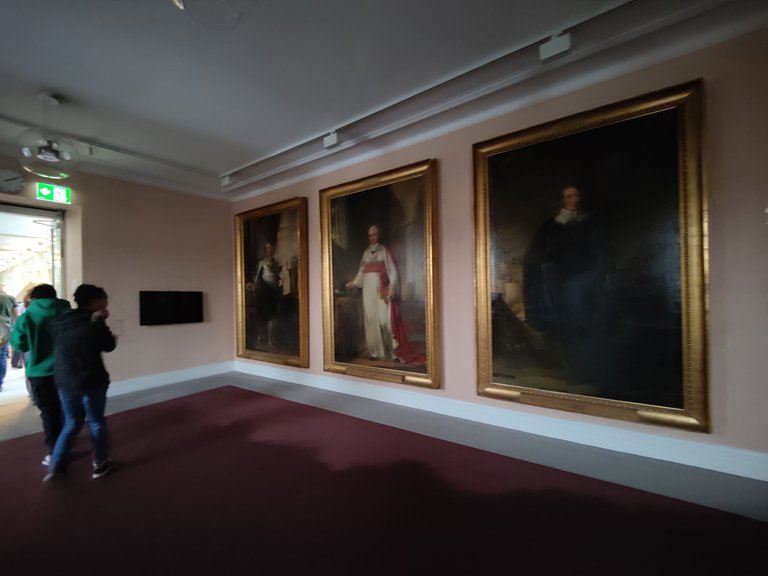
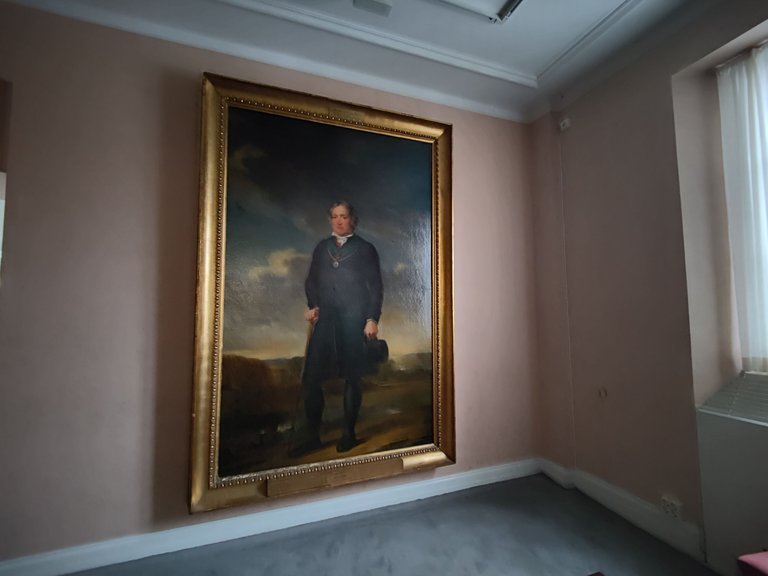
They were the last representatives of this type of voting, as it was decided in 1866 that this system was unfair and outdated. Nowadays, interviews take place in the same room and when everyone must gather in the great chamber, there is a signal that lights up and sounds to let everyone know.
UNDERGROUND PASSAGEWAYS
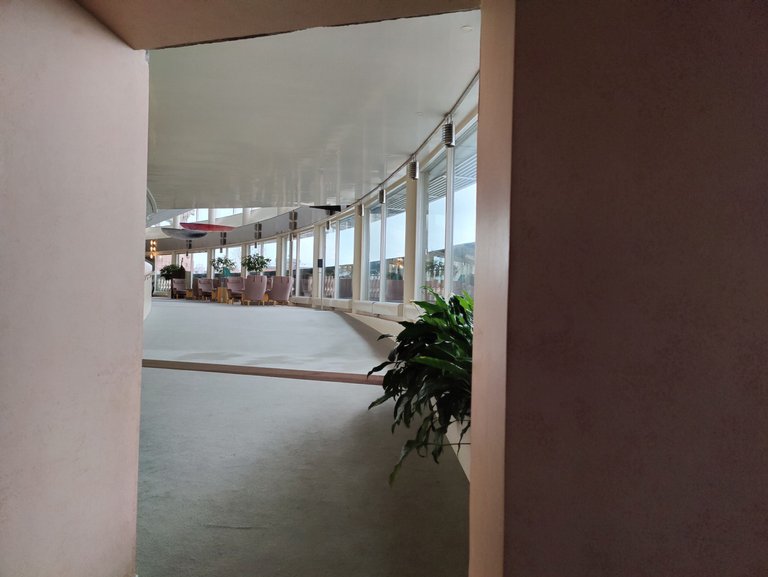
When the Parliament is in session, its members often have to hurry between buildings. To make this easier, seven of the Riksdag’s buildings are connected by underground passageways.One of these passages – called “the Run” – is situated below the bridge over Stallkanalen, which connects lake Mälaren with the Baltic. Members often use this passage when they need to get to the Chamber quickly. When the voting signal sounds, they have eight minutes to get there.The Run is just one of the many fascinating features of the Parliament buildings. If you ever have a chance to visit them, be sure to take a look around – you might just discover something new!
THE SECOND CHAMBER
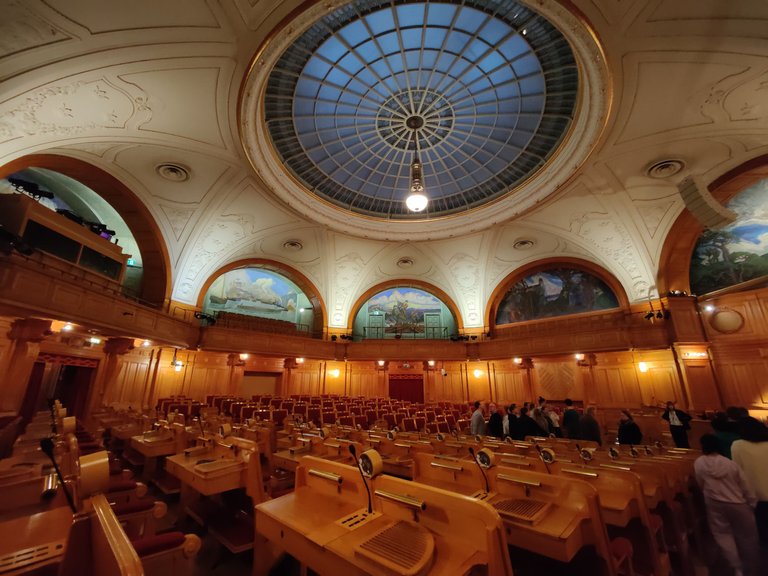
The octagonal second chamber is one of the most beautiful and historic rooms in the Parliament building. It retains its original furnishings from 1905, including the frescoes on the walls and the large vaulted skylight.

Today, the largest parliamentary party group meets here for discussions. Some of the Committee on the Constitution’s hearings are also held in this chamber.
The Finance Committe Room
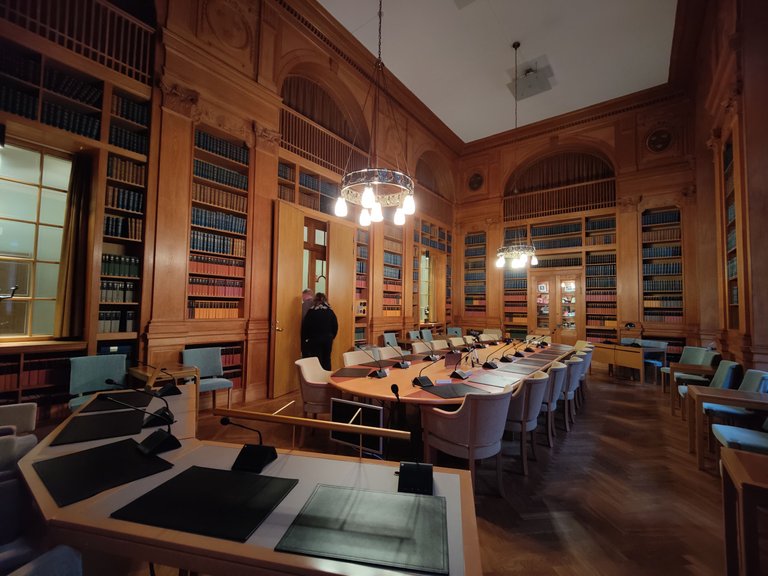
The East Wing houses the meeting spaces for the legislative committees. This one is the Committee on Finance's meeting space, which is located in the Parliament's historically significant reference library. It used to be a reading room as well. The bound volumes of the parliamentary record are kept in the high bookcases. This room is where Swedish lawmakers debate and vote on financial matters affecting the nation. Everything from taxes and government spending to economic policy is discussed here. These debates can get quite heated, but at the end of the day, decisions made in this room have a big impact on the lives of everyday Swedes.
THE GRAND STAIRWAY
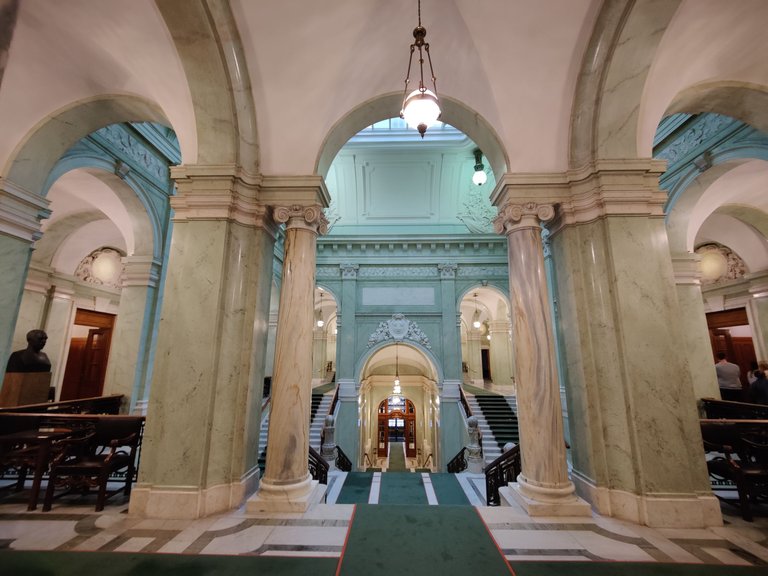
The Grand Stairway is one of the most impressive features of the East Wing's grand entrance hall. It is made up of columns and stairs made of several types of marble, and is used for a number of ceremonial events, such as the King's annual opening of the Parliament session in September.
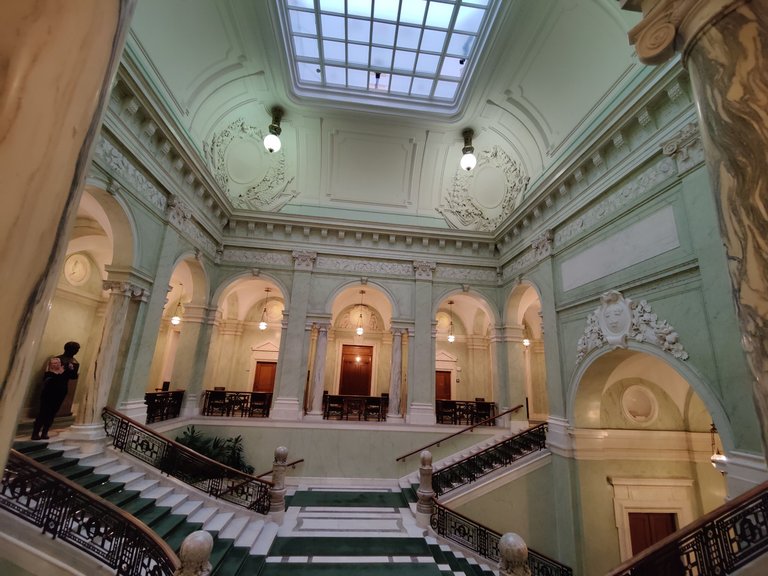
The Grand Stairway is a beautiful and awe-inspiring sight, and it is sure to impress anyone who sees it. It is one of the most popular features of the East Wing, and it is definitely worth a visit.
THE GRAND GALLERY
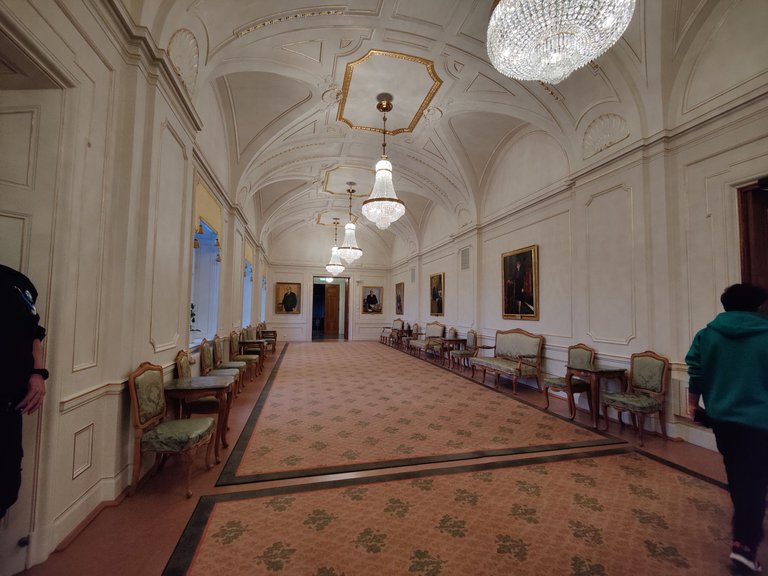
The Grand Gallery is a 45-metre long gallery that connects the two chambers of the Parliament Riksdag from the bicameral era. In former times, the members of the Parliament met here between debates.
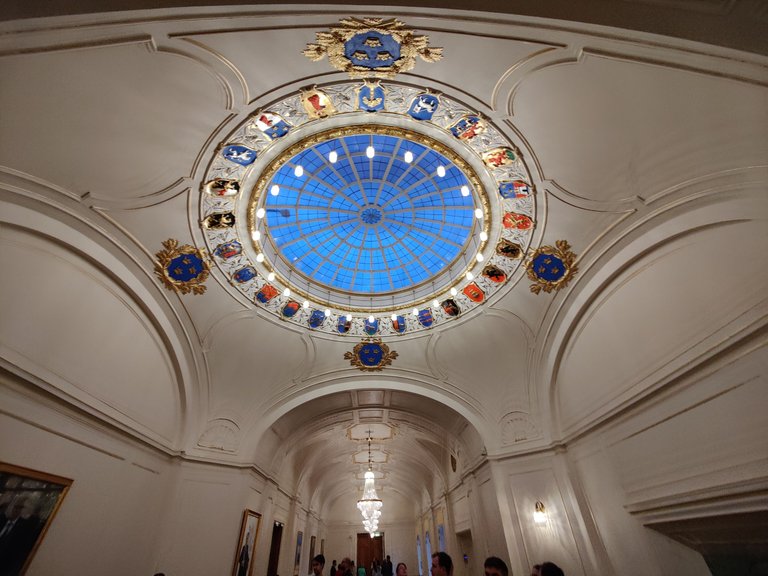
Today, it serves as the Riksdag's main venue for official dinners and receptions. The glass skylight in the middle is ringed by Sweden's 24 provincial coats of arms.
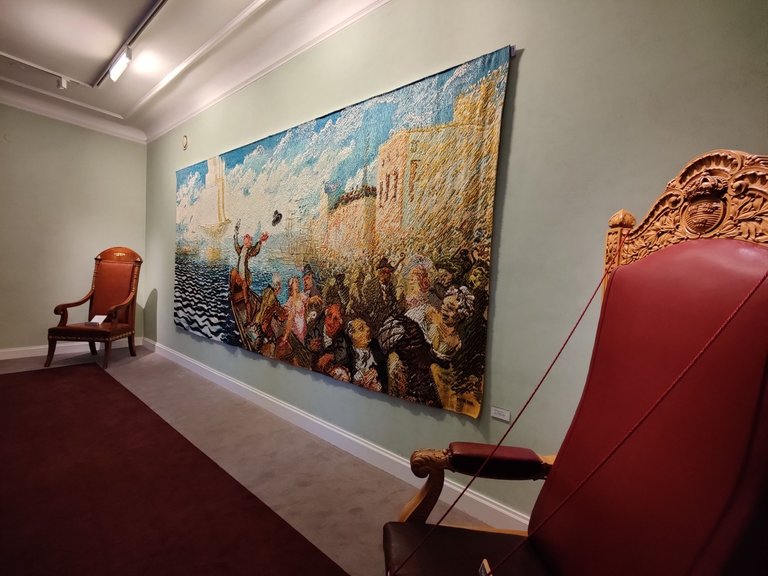
The inside of Parliament House is just as magnificent as the outside.
If you're interested in learning more about the Swedish government and how it works, a visit to the parliament is a great way to do so. There are plenty of guided tours available, or you can simply wander around on your own. Either way, you're sure to come away with a greater understanding of Swedish politics.
Disclaimer
As I mentioned in my intro, from the last 2 decades I have been active on social media, google mapping and reviews, youtube and thatsup. I will share my own past interesting content from these channels, but all my upcoming content I will share on hive.blog first.
Follow me on
Facebook | Twitter | Instagram | Tiktok

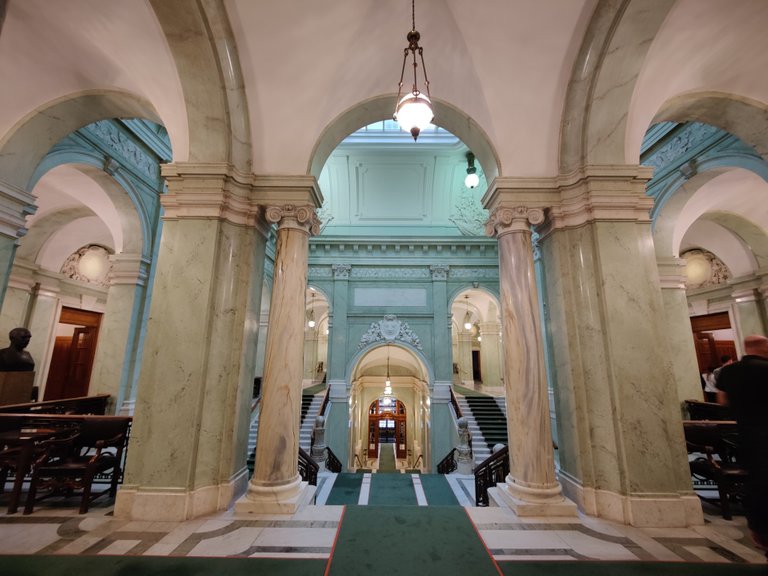
Congratulations @shahzad-ansari! You received a bright smile from TravelFeed. Our eyes were beaming while reading your post. 😁
Thanks for using TravelFeed!
@invisusmundi (TravelFeed team)
PS: Did you know that we recently launched the truvvl app? With truvvl, you can create travel stories on the go from your phone and swipe through nearby stories from other TravelFeed users. It is available on the Apple App Store and Google Play.
Congratulations, your post has been added to Pinmapple! 🎉🥳🍍
Did you know you have your own profile map?
And every post has their own map too!
Want to have your post on the map too?
Congratulations @shahzad-ansari! You have completed the following achievement on the Hive blockchain And have been rewarded with New badge(s)
Your next target is to reach 100 posts.
You can view your badges on your board and compare yourself to others in the Ranking
If you no longer want to receive notifications, reply to this comment with the word
STOPTo support your work, I also upvoted your post!
Check out our last posts:
Sweden has amazing places to visit, I was there once and I love it!
🅖ᴏᴏᴅ ᴄᴏɴᴛᴇɴᴛ✔
🗳🅨ᴏᴜ ɢᴏᴛ ᴍʏ ᴠᴏᴛᴇ ✔
🤜🤛🅖ᴏᴏᴅ ᴊᴏʙ✔